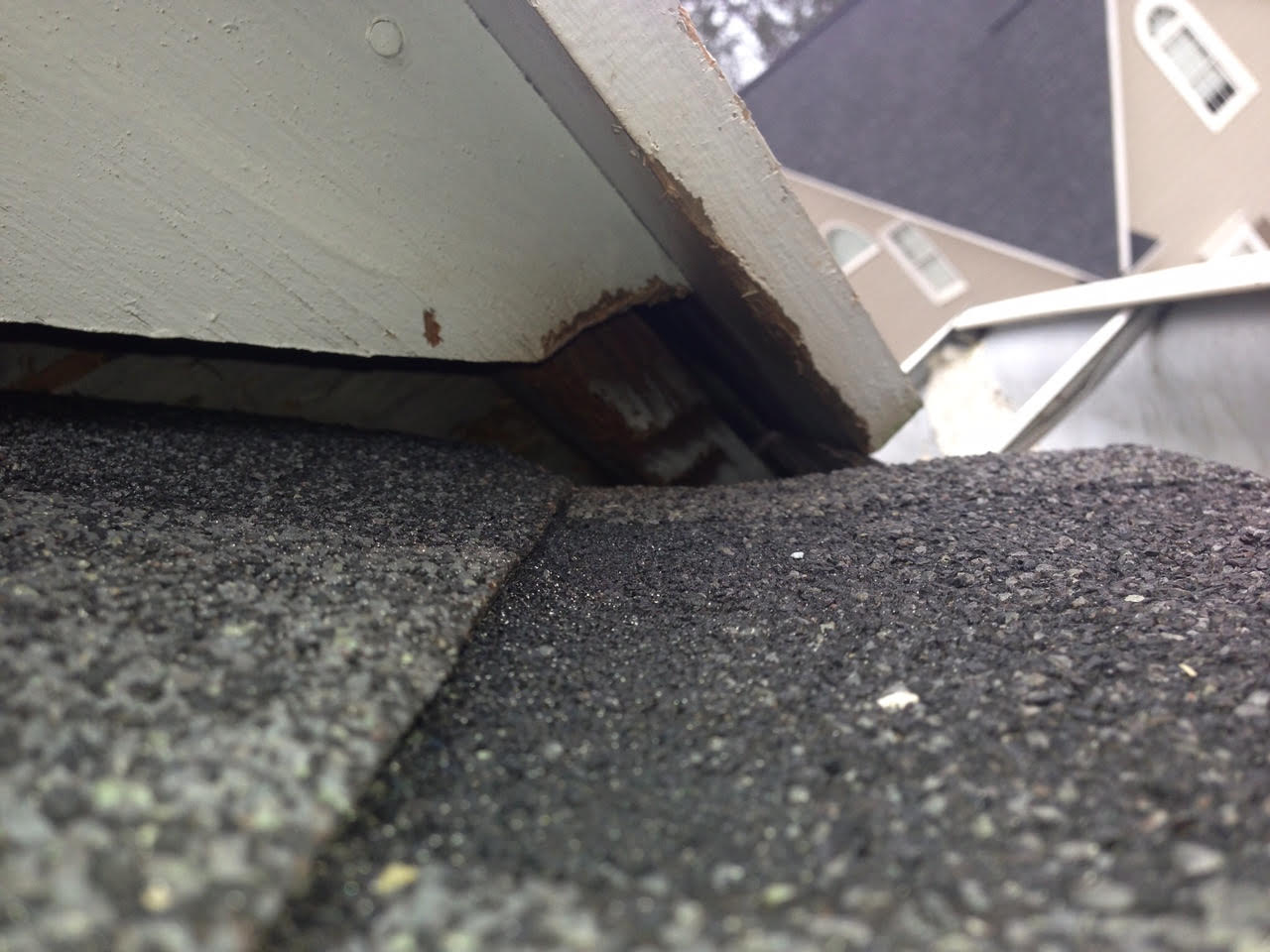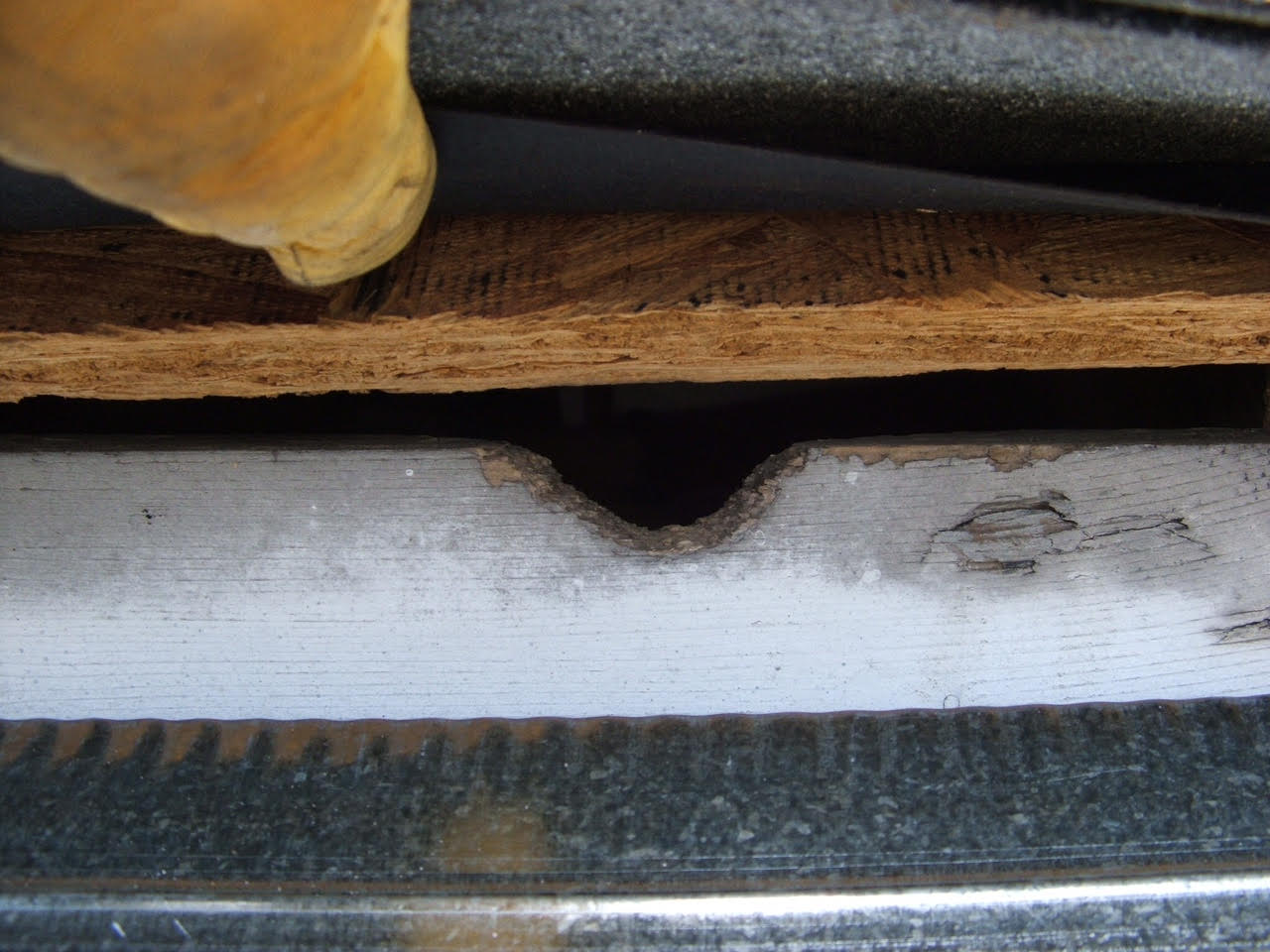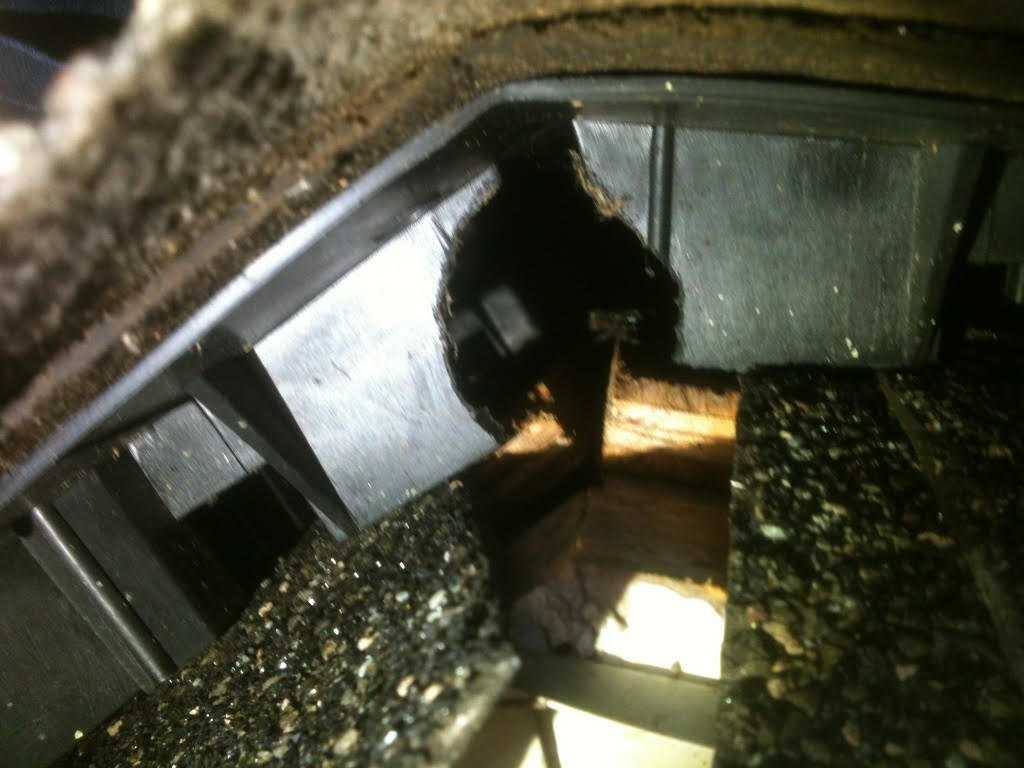Cold weather bringing them in
February 12, 2016How to get rid of woodpeckers
February 29, 2016It’s the time of year when squirrel pest control in the attic is a service we provide to home owners multiple times per day. Twice a year there is a peak in squirrel breeding. Usually February-March and September-October female squirrels invade your attic space. Our customers generally ask similar questions about how we determine the presence of attic critters and what the critter removal process is once we determine the type of critter control needed. Some ask are you looking for critter poop and gnawing or nests?
Correct. We look for damage to the insulation, footprints in the dust, entry point(s) size as well as a few other things.

This chew hole on the construction gap is about the size of half dollar. It was made by rats. Believe it or not, the rats really didn’t need to chew the hole that big, the gap was sufficient to allow entry without chewing.
The picture above is a chew hole in a ridge vent on the very top of the roof. The hole is about the size of a quarter. This is from flying squirrels. Although rats use ridge vents as well. Of course if you look closely you can see some hairs around the entry. The hairs are from flying squirrels not rats.
Very common question: How do you catch the critter(s) and where do you put the traps?
Without seeing the home its hard to give exact details about the trap placement. This is part of the reason the inspection is so crucial. Seeing where the critters traveled heavily is very important when we determine where we would like to place the traps. The animals could enter on one side of the home, travel a distance and nest on the other side, or may come right in and travel 6 inches and plop down into their nesting site. Or may have several bedding and nesting locations in the attic or even the walls which explains why you aren’t hearing them daily for some folks.
Another common question from home owners involves their pets, they may say “we have small dogs and cats and I am wondering, are they at risk of being harmed or ingesting poison from traps?”
We do not use poison in the squirrel traps or rodent traps. When we bait the traps we use real food that these rodents would be highly attracted to. If we used poison we would run the risk of a critter dying in your home in an area we couldn’t find it. You wouldn’t really be pleased with the outcome. The old wives tail that poison makes the animals thirsty and they will go outside to seek water is just not true. Furthermore, poisoning squirrels is a violation of federal law (the FIFRA act).
Some customers need to know what is the squirrel in the attic removal cost? Or what are the terms of payment?
Correct, we charge a flat rate for our trapping service. Trapping is always a preparation for exclusion, trapping is step one of a 4-5 step process for long term critter control relief. If you decide to repair the home the total cost would be determined once one of our technicians inspect the home. Let’s say you agree to our complete process the day we inspect the home. That day we would take a deposit usually around $400-$600 to cover the trapping program portion of the exclusion. We would set traps that day then figure out a day to come back and check the traps. The night before we are set to come check traps we would call you to confirm a time. We would do this for several weeks until we feel the squirrel removal process is complete. After the trapping in the attic is done we have our exclusion team perform the necessary repairs and exclusion to the home. After the exclusion is complete the attic rodent waste clean up process would be done, after that the fourth step of maintenance should be done, this may involve trimming trees away from the roofline, removing food sources like bird feeders or pet food, etc, removing wood and rock piles or any number of other things determined to be contributing factors during the initial inspection.
The trapping process is very important and shouldn’t skimped on. Some of our competitors have started doing a seal first and trap after or use a one way escape tunnel. These processes work great when you are watching the bottom dollar but not very effective long-term to leave the animal on the property. Or sealing up an animal in the house is also not a very good idea. The animal may panic and end up in the living space or die in a wall or other hard to get to space that may require cutting and other demolition to the home. Trapping for several weeks prior to sealing pretty much means 99% of the time you have removed all animals before the home is animal-proofed.



